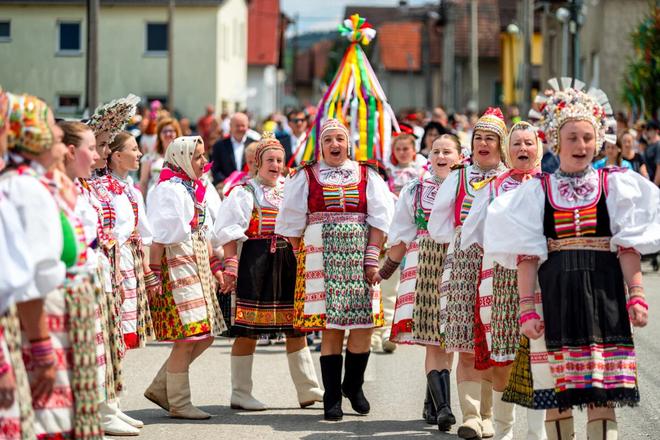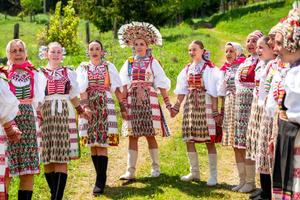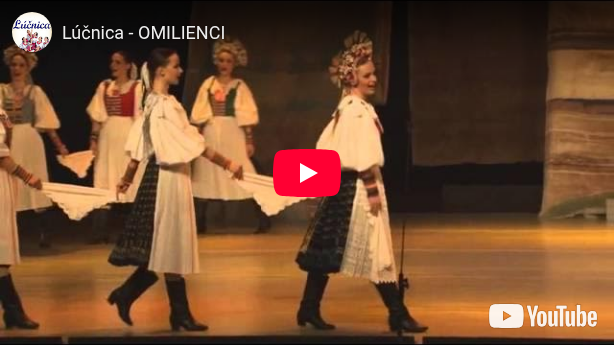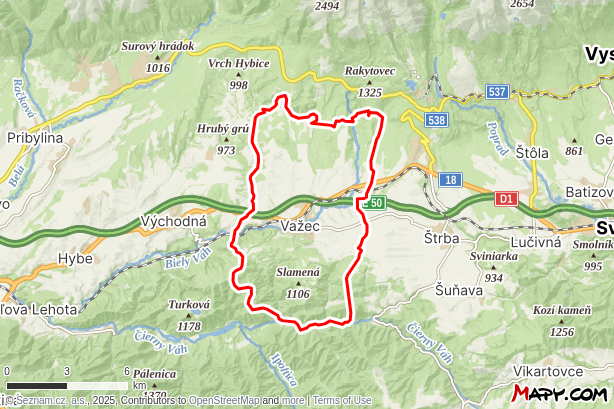In the mountainous Liptov region of northern Slovakia, folk traditions still shape everyday life. Nowhere is this more vivid than in Važec, a small village where a centuries-old Pentecost ritual known as Omilienci continues to thrive.
Performed once a year on Pentecost Sunday – the Christian holiday that falls 50 days after Easter (June 8 this year) – the Omilienci procession is a ceremonial dance led by young women. Holding hands with white scarves, they move in a horseshoe-shaped formation through the village, singing to welcome spring.
The ritual has deep roots in local history, writes My Liptov. Passed down over generations, it remains largely unchanged. “We do it exactly the way our grandmothers taught us,” said Matúš Ilavský, artistic director of the Stráne Folklore Ensemble, which now helps organise the event with the municipality.
Girls wear bright red skirts, pale scarves and high boots – traditional attire specific to Pentecost Monday. The procession is typically led by the youngest bride among them, her solo voice carrying the melody before the group joins in chorus.
To safeguard the tradition, Važec is seeking national recognition. The municipality, together with folklorists and the local branch of Matica slovenská, has applied to include Omilienci on Slovakia’s list of Intangible Cultural Heritage. The bid is being evaluated by the Centre for Traditional Folk Culture.
“It's a living heritage,” said Mayor Milan Lištiak. “We want to preserve it for future generations and secure support for its continuation.”
If approved, Omilienci would become the first tradition on Slovakia’s heritage list tied exclusively to the Liptov region.







